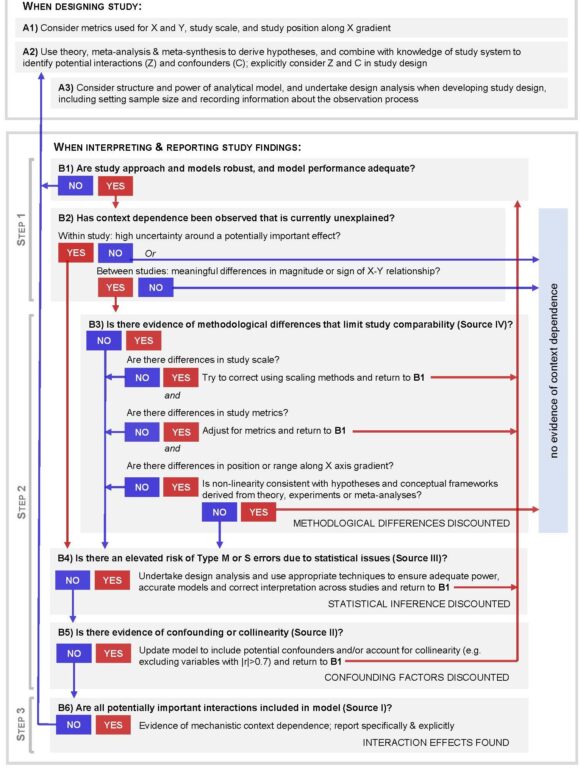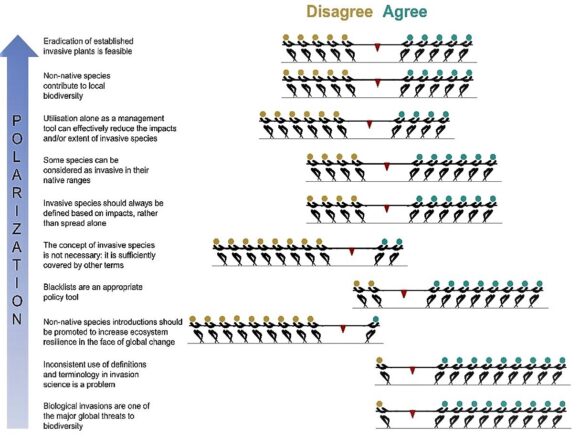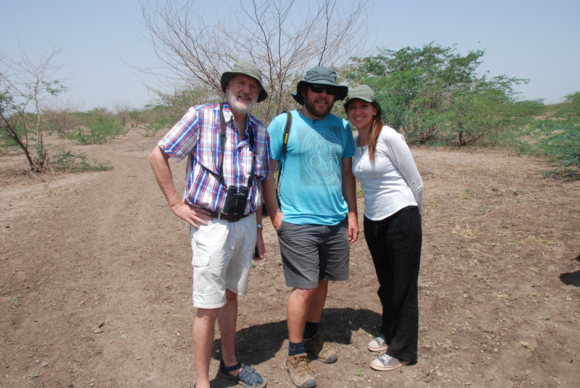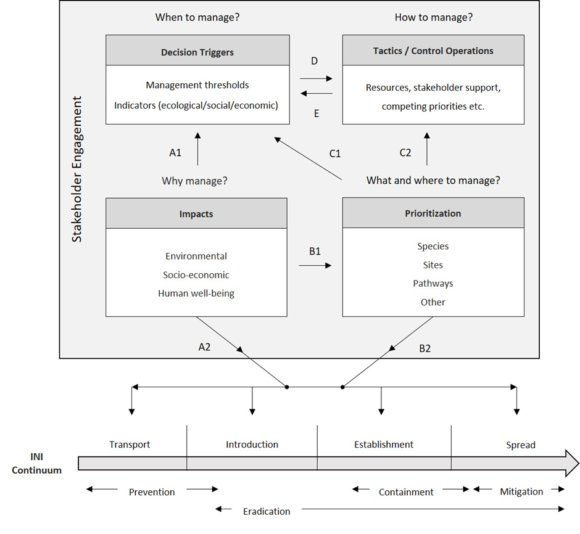1 December 2021 | By John Wilson
Whether an organism will become invasive and have impacts depends on how organisms were moved around, the type of organism, and the recipient environment (Pyšek et al. 2020). Or to put another way, if asked whether an organism is likely to become a harmful invader, ecologists are likely to answer ‘Well… it depends.’ This reflects the wonderful variety and complexity of nature and people, but such a response can be enormously frustrating to policy makers and managers. They want a clear answer to the question ‘What should we do?’
A new synthesis paper in Trends in Ecology and Evolution (TREE), co-authored by C∙I∙B Core Team member John Wilson and C∙I∙B Associate Petr Pyšek, provides advice as to how this can be answered in a scientifically robust way, ‘…it depends on how the data were collected and interpreted and on these specific factors…’
The importance of context has been long debated in invasion science, and increasingly the term ‘context dependent’ has been used as a shorthand for either ‘We do not know’ or ‘We have shown a factor to be important, but we recognise it is a bit more complicated than that’.
In their TREE paper, the authors identified four different reasons why the results of a study vary with the context under which the study is performed.
- There is an interaction effect. This means there is a mechanistic interaction between a variable and the invasive organisms. They cite the case of giant bamboo, Phyllostachys bambusoides, an example cited in their TREE paper. Invasive populations in Japan show a positive relationship with canopy cover in cold regions but a negative relationship in warm regions, owing to the interaction effects of light and temperature on bamboo occupancy (see Spake et al. 2021).
- There is a confounding factor. While it might appear from the data that there is a direct causal relationship, this is actually mediated by another (often unmeasured) factor. Therefore, if results are extrapolated to a different region where the confounder is no longer the same, then the relationship might not hold, and advice to managers will be misleading.
- How the relationship is defined also depends on the statistical tools used. Importantly this can both be due to overestimating the significance of a weak relationship and underestimating the potential importance of a relationship that is found to be ‘not significant’.
- Finally apparent context dependence can occur if different methods are used, and this is not properly addressed when different studies are compared.

The paper elucidates each of these types of context dependence and proposes a flow diagram (see below) to assist in differentiating the different types and identifying what needs to be done to be confident that X really does depend on Y in a predictable way.
It will not be possible to always address context dependence, but it is fundamental to invasion science.
“If you aren’t addressing context dependency you aren’t doing ecology!” (Prof. Luke Flory, University of Florida on Twitter https://mobile.twitter.com/lflory/status/1455638192363761664)

Read the full paper
For more information, contact John Wilson at jrwilson@sun.ac.za
Further references
Pyšek P, Bacher S, Kühn I, Novoa A, Catford JA, Hulme PE, Pergl J, Richardson DM, Wilson JRU, Blackburn TM (2020) MAcroecological Framework for Invasive Aliens (MAFIA): disentangling large-scale context dependence in biological invasions. Neobiota 62: 407–462. https://doi.org/10.3897/neobiota.62.52787
Spake R, Soga M, Catford JA, Eigenbrod F (2021) Applying the stress-gradient hypothesis to curb the spread of invasive bamboo. Journal of Applied Ecology 58: 1993-2003. doi:10.1111/1365-2664.13945



